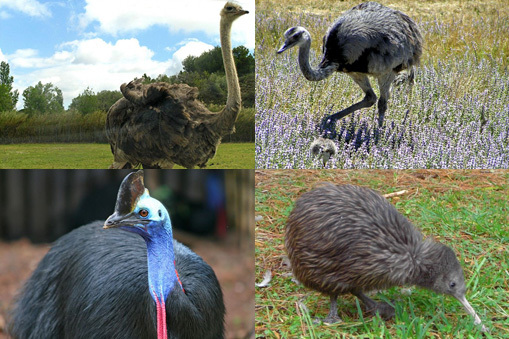New Zealand has a rich and unique range of plants, animals and fungi. The level of distinctive biodiversity is as high as such world-renowned ecosystems as the Galapagos Islands. So how have our unique ecosystems developed?
Continental drift
The theory of continental drift was proposed over 90 years ago by Alfred Wegener and is now a widely accepted theory of how the continents of the world developed. Around 250 million years ago, only one large mass of land existed – Pangaea, the supercontinent.
Over time, this land mass separated into two massive continents – Laurasia in the north and Gondwana in the south. These continents existed for approximately 80 million years, before they began to break up into remnants that are recognisable as the continents of today.
The land that was to form New Zealand began to break away from Gondwana around 80 million years ago and finally broke away around 65 million years ago. Ever since, New Zealand has been an isolated island.
When New Zealand separated from Gondwana, it took some of the flora, fauna and fungi of the supercontinent with it. Some of our oldest species have evolved from ancestors that were once residents of Gondwana and are recognisable through having related species spread across the southern continents – Africa, South America and Australia. For example, the New Zealand kiwi is distantly related to the rhea (South America), ostrich (Africa) and cassowary (Australia).
Evolving in isolation
Approximately 65 million years ago when the last land bridge to Gondwana was lost, the flora, fauna and fungi of New Zealand began to evolve in isolation. As a consequence, many of our native species – like the kauri, kahikatea, tōtara, rimu, tuatara, kiwi, kauri snail and wētā – have become uniquely adapted to life on our islands and now only exist in this country.
Some species were able to reach New Zealand after the separation from Gondwana by floating on currents or being blown by the wind, a process that continues today. Plants such as mānuka, rātā, flax and pōhutukawa, birds such as the saddleback, kōkako and huia, and our native bats all originated in other lands and travelled across the sea. Once here, these species have evolved separately from their relatives in Australia or South America and, over time, have developed as specialised inhabitants of the New Zealand islands.
Nature of science
Continental drift theory begins to explain New Zealand’s unique flora, fauna and fungi, but there are still gaps in the story for scientists to investigate, for example, what was the catastrophic event that wiped out the dinosaurs? Lots more evidence and data needs to be gathered before scientists can propose fuller explanations.
Going against the trend
Around the time that New Zealand was losing the last of its land connections to other land masses, a dramatic event occurred that resulted in one of the most devastating loss of species that has ever been recorded. There are different explanations for this loss – some scientists think a meteor hit the earth, others suggest a series of volcanic eruptions blanketed the atmosphere with smoke. Whatever the cause, the result was the mass extinction of the dinosaurs and other species.
Before this, the reptiles had dominated, but within a very short period of time, close to 85% of all species were wiped out, and the mammals began to occupy the vacant ecological niches – everywhere, that is, except New Zealand.
For reasons that are not apparent, New Zealand was not inhabited by many mammals. Instead, our fauna became dominated by birds and insects. Birds became the predators, the scavengers, the herbivores and the insectivores. They lived everywhere from the highest mountains to the sea. With few predators, many lost the ability to fly and became ground dwellers. Insects evolved to extremes of big and small and occupied a range of habitats.
This process has made New Zealand unique – nowhere else on the planet has such a range of bird life and insect life, with only two species of bat representing the mammals. Many of our indigenous plants are also unique, for example our divaricate plants.
Related content
In addition to the links within the article above, see this timeline of New Zealand's changing ecosystem.
The resources below curate related Hub resources if you want to find out more:
- New Zealand’s unique ecosystems – introduction
- Conserving native birds – introduction
- New Zealand native trees – introduction
- All about fungi
- Saving reptiles and amphibians – introduction
- Investigating butterflies – an introduction
- New Zealand’s freshwater fish – introduction
- Investigating our fern flora origins
The Connected article Life in Aotearoa New Zealand looks at what made our wildlife so unique and introduces the science concepts evolution and adaptation.



